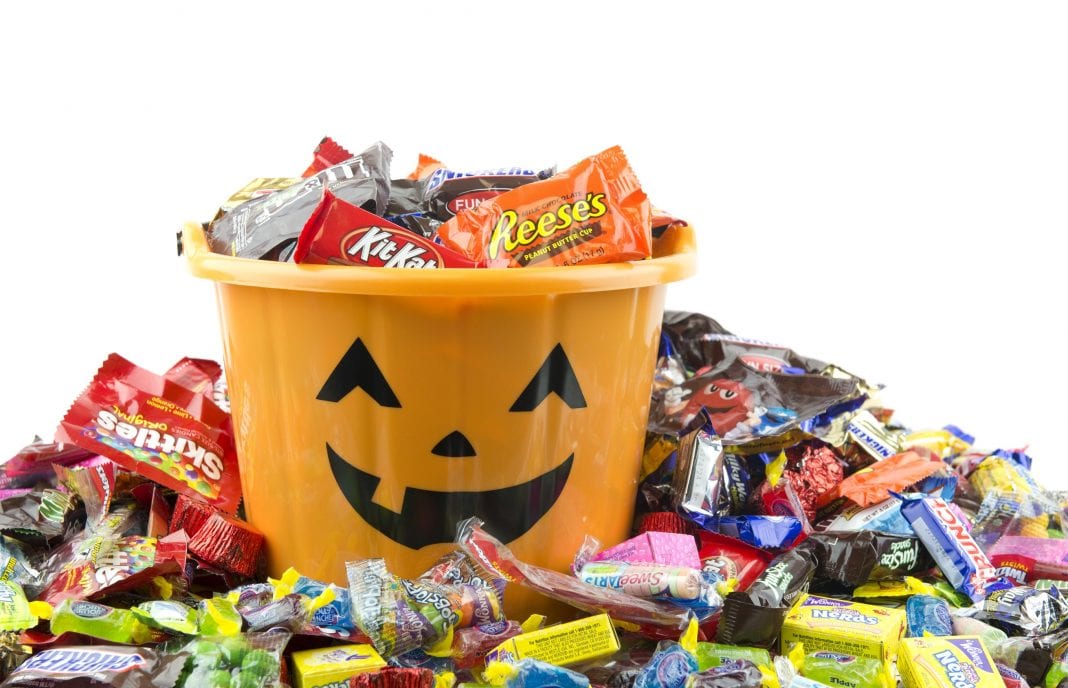Before you know it ghosts, witches, super heroes and silly characters will fill your neighborhood, making their way from door to door, exclaiming cheerfully “trick-or-treat!” Do you have your costume ready?
Besides planning a perfect costume, there are a few more things to think about this spooky season. Dr. Rebecca Asomaning, a pediatrics physician at Kaiser Permanente Olympia Medical Center, has some tips to share for a safe and healthy Halloween for you and your whole family. Keep these recommendations in mind, before you make your way out trick-or-treating.
Preparing for Trick-or-Treaters
To let trick-or-treaters know you are ready for them, turn on your porch light. Make sure the pathway to your door is well-lit and free of obstacles. Rake leaves off walkways, as the rain can make them slippery, creating the potential for a nasty spill. Some trick-or-treaters may have food allergies. Consider providing non-food treats for them, or for all trick-or treaters that come to your door. You can indicate that your home has non-food options by painting a teal pumpkin and placing it on your door step. Stickers, glow bracelets or novelty toys are popular and inexpensive treats.

Dress for the Weather and Safety
Cold and wet are the two main components of hypothermia, and they can also make you just plain miserable. Some costumes are very thin and provide little protection from the elements. Consider layering warmer clothes underneath the costume. Have a plan for the rain and carry a poncho or umbrella, just in case. Before heading out, it is also good to ensure costumes allow free movement, and don’t hang too low resulting in a tripping hazard. Masks can reduce the field of vision, so face paint is a good alternative.
Prepare for the Dark
It gets dark very early this time of year, with the sun setting around 6:00 p.m. “Be prepared by bringing a flashlight and go trick-or treating in well-lit neighborhoods,” says Asomaning. Reflective stickers that can be attached to costumes or glow in the dark bracelets can help make children more visible to motorists.

Use Care When Crossing Roads
The excitement of trick-or-treating can overwhelm a child’s good judgement, so set clear expectations when crossing the street. Vehicle traffic, other trick-or-treaters, and even curbs could spell a recipe for disaster. Remind children not to dart across the street or out from behind parked vehicles and to look to grownups for guidance about when it is safe to cross.
Group Up
It can be easy for kids and parents to lose track of each other in crowded neighborhoods. Smaller children should hold an adult’s hand when passing from house to house. Older children and young teens should still have adult supervision, but going in a group of parents and kids can help them feel more independent. Set clear rules before going out about how far older children may get ahead of the supervising adults. A good rule of thumb is to regroup before crossing a road. If the neighborhood gets very busy, consider reducing the distance to just one or two houses, and make sure every child in the group understands and follows the guidelines.
Stay Healthy in Crowds
“Upon returning home, everyone should wash their hands,” Asomaning says, which will reduce the likelihood of picking up a virus that they may have come in contact with when touching people or surfaces like doorbells and handrails. She also recommends a flu shot for everyone before the big night.

Enjoy Candy in Moderation
When returning home, parents should look over the candy to check for open or torn packages, discarding any unsuitable pieces. Remember, when in doubt, throw it out. Parents should store the candy and control how much and how often children get a treat. Remember portion size—it’s not just for children, but also for parents who share their children’s candy. Help your child pick a few candies to celebrate the holiday, then put the rest away for later. One method for reducing sugar overload is starting a “candy fairy” or “switch witch” tradition where kids exchange their candy for a toy or reward. “Another option is to challenge the child to see how long they can make their Halloween candy last,” says Asomaning. “Encourage them to try to make it last until next Halloween,” she says with a laugh.
Brush Teeth after Eating Candy
Regular dental hygiene is always important, but even more so when it comes to sugary treats. “Soft chocolate is usually a better choice than sticky or hard candies,” says Asomaning. Parents should ensure that children brush well after eating candy and as a regular part of the nightly routine.
Following these simple guidelines can help ensure that your Halloween is one to remember for all the right reasons. The health care community at Kaiser Permanente wishes you and your family a safe and healthy Halloween!
Sponsored













































